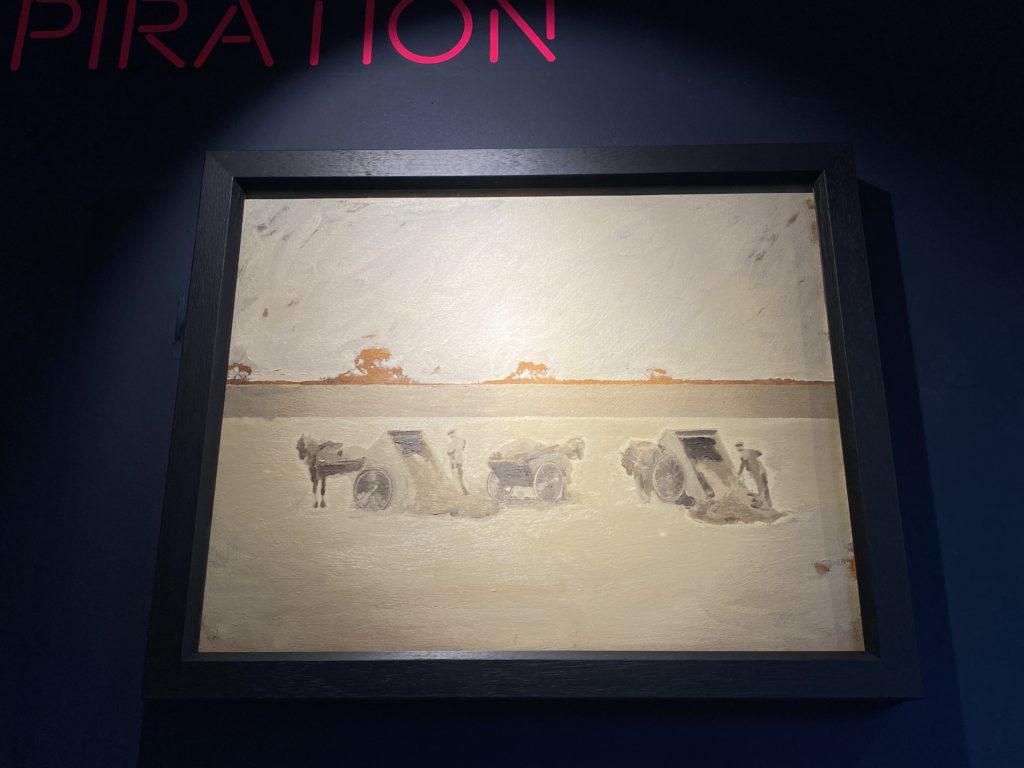
This painting was a way of thinking through ideas of value, humility, labour, distance, and visibility. I was interested in these ideas in relation to my research into the lives and treatment of nightsoil workers in the 1800’s. The artwork depicts a bleak and melancholic stretch of farmland where three workers are unloading nightsoil to be used as a fertiliser. We do not see the faces of the workers, and the central figure is an inconspicuous presence, barely visible. I wanted to question the relationship between visibility and value, specifically in the context of painting, calling us to rethink the value we place on figures that are less visible, in both painting, and society at large.
As viewers, we are distant from the work. And the workers, unaware of our presence, continue in their laborious task of offloading the nightsoil, perhaps in conversation, or lost in thoughts and singing.
I was thinking about the sensory and societal barriers that would create distance between the workers and the public, and how poor treatment could stir up a yearning for solace, perhaps found in the openness of farmland, away from the stifling hostility of the public.
These thoughts have culminated into a quiet scene that calls for empathy and contemplation, where humility is a subject of admiration, and hidden labour the subject of visibility.





